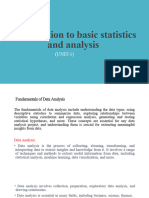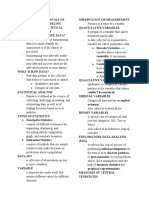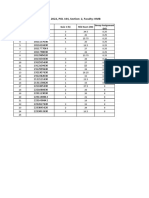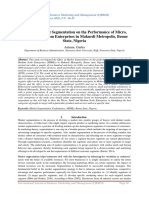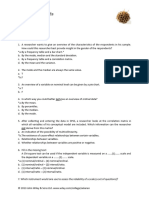0% found this document useful (0 votes)
2 views11 pagesNotes
The document provides an overview of data types, populations, samples, and the basics of statistics, including descriptive and inferential statistics. It also covers exploratory data analysis (EDA) objectives, methods, and key concepts such as measures of central tendency, variability, and quartiles. Additionally, it introduces Chebyshev's Theorem and the Empirical Rule for understanding data distributions.
Uploaded by
The MaskerCopyright
© © All Rights Reserved
We take content rights seriously. If you suspect this is your content, claim it here.
Available Formats
Download as DOCX, PDF, TXT or read online on Scribd
0% found this document useful (0 votes)
2 views11 pagesNotes
The document provides an overview of data types, populations, samples, and the basics of statistics, including descriptive and inferential statistics. It also covers exploratory data analysis (EDA) objectives, methods, and key concepts such as measures of central tendency, variability, and quartiles. Additionally, it introduces Chebyshev's Theorem and the Empirical Rule for understanding data distributions.
Uploaded by
The MaskerCopyright
© © All Rights Reserved
We take content rights seriously. If you suspect this is your content, claim it here.
Available Formats
Download as DOCX, PDF, TXT or read online on Scribd
/ 11


